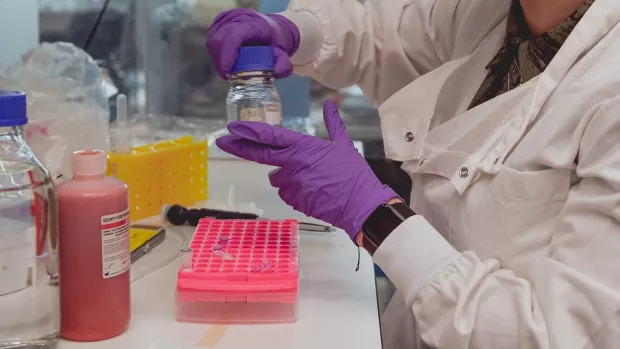
Phenytoin
Phenytoin is already used to treat epilepsy. In a phase 2 clinical trial, phenytoin reduced damage to the back of the eye (retina) by 30% compared with placebo. This suggests it could help to protect nerves from damage.
- Current phase of trial:
- Phase 2
About phenytoin
How does phenytoin work?
Phenytoin has been used to treat epilepsy for more than 60 years. It works by stopping sodium ions from entering nerve cells, which prevents the seizures in epilepsy from spreading to other parts of the brain.
We know that a build up of sodium can cause nerve damage in MS, so phenytoin may have the potential to protect nerve cells in the brain and spinal cord from this damage (known as neuroprotection).
How is phenytoin taken?
Tablet or oral suspension.
Latest phenytoin research
Results from a phase 2 trial of phenytoin were published in the Lancet in January 2016. Researchers found that those taking phenytoin had 30% less damage to the retina (the light sensitive nerve fibre layer at the back of the eye), compared with those taking a placebo. This suggests that phenytoin could protect nerves from damage.
The trial involved 86 people who were experiencing early symptoms of acute optic neuritis. They took either phenytoin or a placebo for 13 weeks .
What are the side effects of phenytoin?
Information on the side effects of phenytoin in people with MS is not yet available. Side effects in people with epilepsy include headaches, dizziness, nausea and vomiting.
How does phenytoin compare with current therapies?
Phenytoin hasn’t yet been directly compared with other therapies for MS.
When is phenytoin likely to become available?
Before it can be made available phenytoin will need to be tested in larger, phase 3 trials in optic neuritis. The benefits of phenytoin will also need to be tested in trials involving people with MS.



